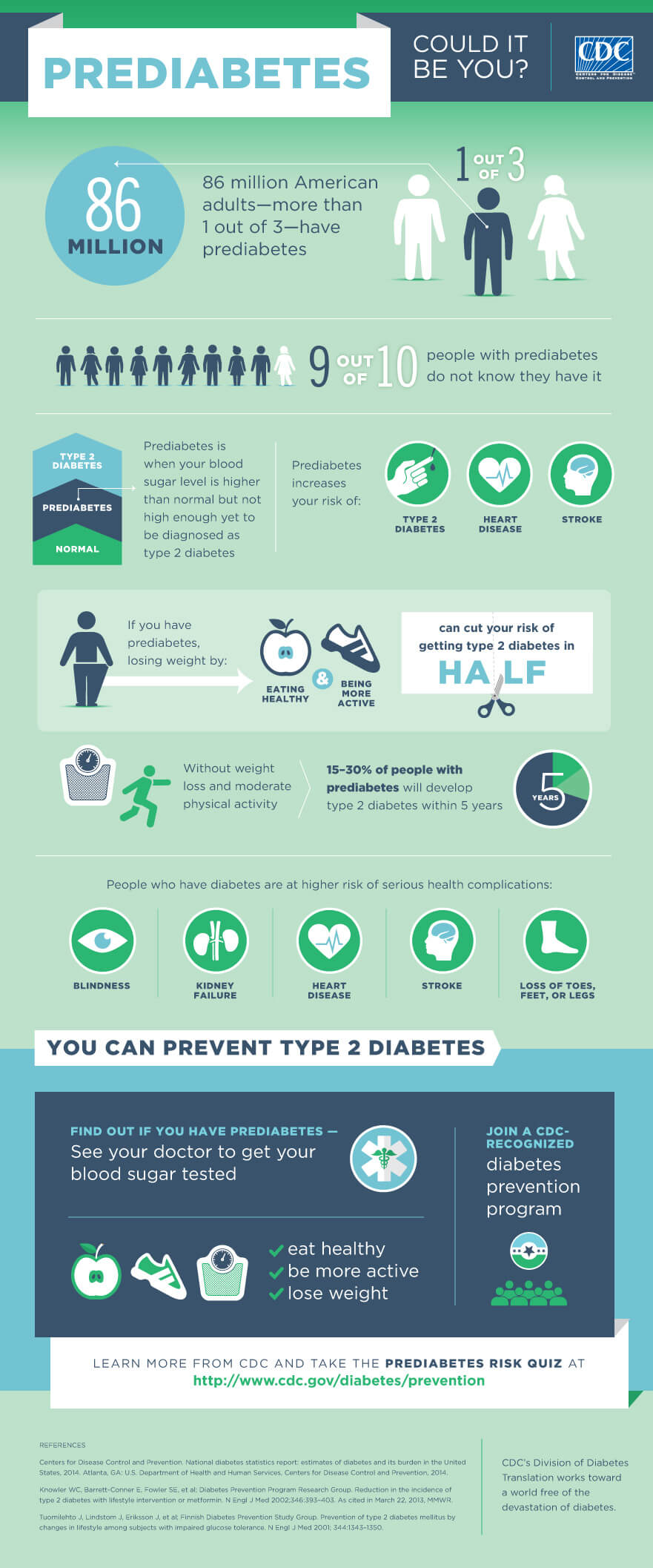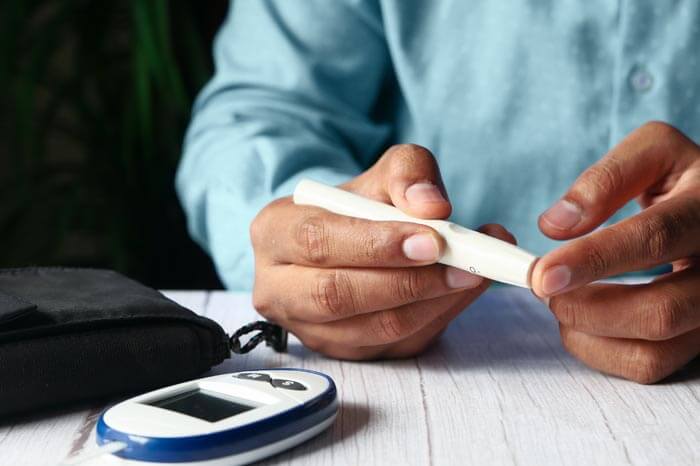More than 86 million Americans suffer from prediabetes- that’s 1 in 3 people. But what is Prediabetes and how does it differ from Diabetes? The diagnosis of Type 2 Diabetes is based on your blood sugar hitting a particular level- when your blood sugar is high, but not technically Type 2 Diabetes yet, that is known as Prediabetes. If proper changes are not made to diet and lifestyle, it is very likely for this to turn into Type 2 Diabetes.
If you have Prediabetes, some of the negative effects may already be starting without you even knowing it. In fact, for every 10 people with Prediabetes, 9 of them do not know they fall into this category. It is important to understand where your own blood sugar falls so that you can take the necessary steps to lower it and move towards better health.
Why is Prediabetes Important?
If left unchecked, Prediabetes is likely to turn into Type 2 Diabetes. When this happens, your body has trouble metabolizing sugar and will either resist insulin, which regulates the movement of sugar into your cells, or doesn’t produce enough insulin to properly fuel your body. The condition often requires extensive maintenance, such as checking blood sugar multiple times per day and potentially self-injecting insulin.
Diabetes also can cause a number of other health issues throughout life. Heart disease, kidney disease, and strokes are all commonly associated with Diabetes. There is also a high risk for nerve damage that can lead to loss of limbs, commonly feet or legs. Blindness is also a potential risk for those with Diabetes.
Prediabetes is important to diagnose because it gives you a chance to reverse course before Type 2 Diabetes sets in. About 15-30% of people with Prediabetes will go on to develop Type 2 Diabetes. Once the disease sets in, it is rarely able to be cured or reversed, so the ability to acknowledge Prediabetes and take the necessary actions is crucial.
How Do You Know if You Have Prediabetes?
At yearly physical exams, your doctor will likely do bloodwork that contains a screening for your blood sugar level and will report any abnormalities to you. This may be expressed as an A1C level, and the typical ranges are as follows:
- Normal: below 5.7%
- Prediabetes: 5.7% to 6.4%
- Diabetes: 6.4% and higher
There are also signs you can look for that may indicate you are experiencing high A1C. Increased thirst and hunger, frequent urination, fatigue, and blurred vision are all symptoms of Prediabetes. If these sound familiar to you, you can ask your doctor for a specific test to determine your A1C levels. They may request you fast before getting blood drawn to determine your blood sugar levels when you haven’t eaten overnight.
Other risk factors can increase your odds of developing both Prediabetes and Type 2 Diabetes. Being overweight is a primary risk factor for this, as well as waist size in inches- more fatty tissue lets your body become more resistant to insulin over time. A poor diet with lots of sugar, red meat, and processed food, and a lack of physical activity can also be risk factors on their own. Age, family history, Polycystic Ovary Syndrome, Sleep Apnea, and tobacco use can all also be indicators that you are at a higher risk of developing the condition.
Ways to Prevent Prediabetes
The best way to prevent Prediabetes is to engage in healthy eating and more physical activity- just these two acts can lead to weight loss and cut your risk of developing Type 2 Diabetes in half.
Monitoring your blood sugar, blood pressure, and cholesterol can help guide you towards improvements that will lower your risk of Prediabetes. Even if the condition runs in your family or you are predisposed, these simple actions can help prevent it from developing, or if it has developed, prevent it from developing into Type 2 Diabetes.
Can Prediabetes Be Cured?
With the right lifestyle changes and care, your blood sugar level can be brought down to normal levels, or at least remain constant so it does not raise to the level of Type 2 Diabetes.
The most important ways to reduce your blood sugar level have to do with lifestyle choices. Eating healthy food- low in fat and calories, high in fiber, with a focus on whole grains- is one of the most important steps you can take, along with increasing exercise. Losing excess weight- even 5-7% of your body weight- can reduce risk as well. Stopping tobacco use will also be important.
If your risk is high and these factors have not worked, your doctor may prescribe medication to control sugar, high blood pressure, or cholesterol.
For more information and to take our Prediabetes Risk Assessment, you can visit and explore a CDC-Recognized prevention program.






